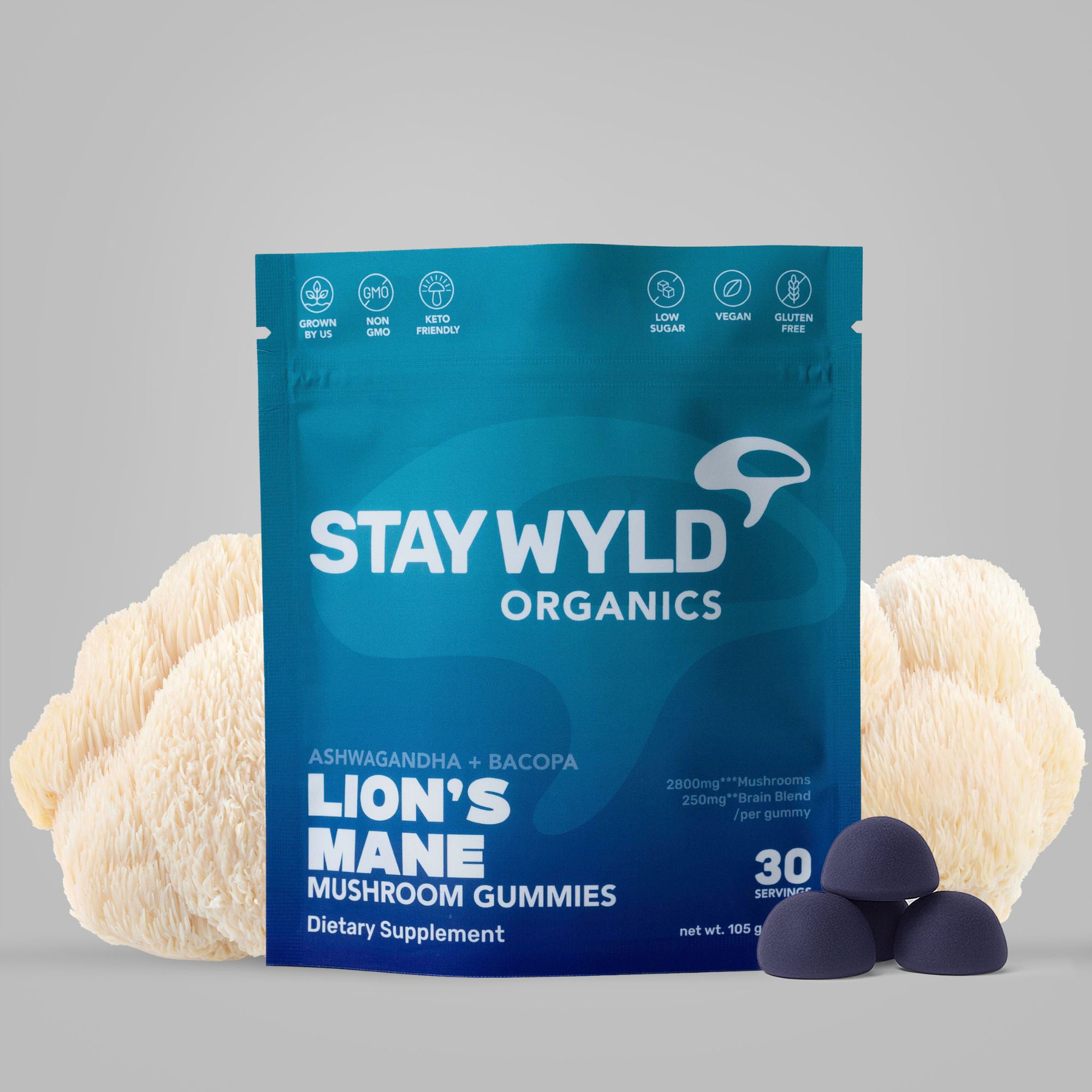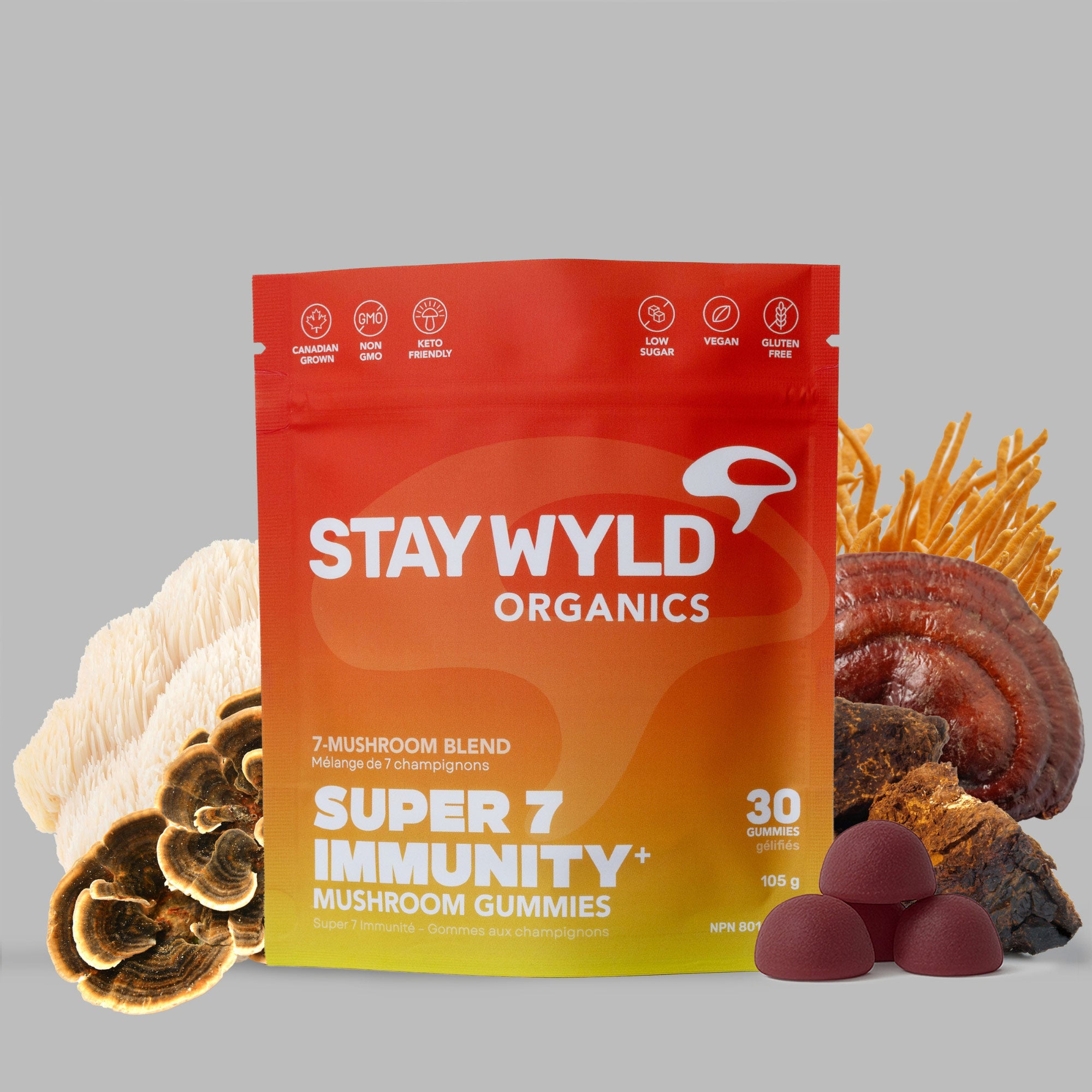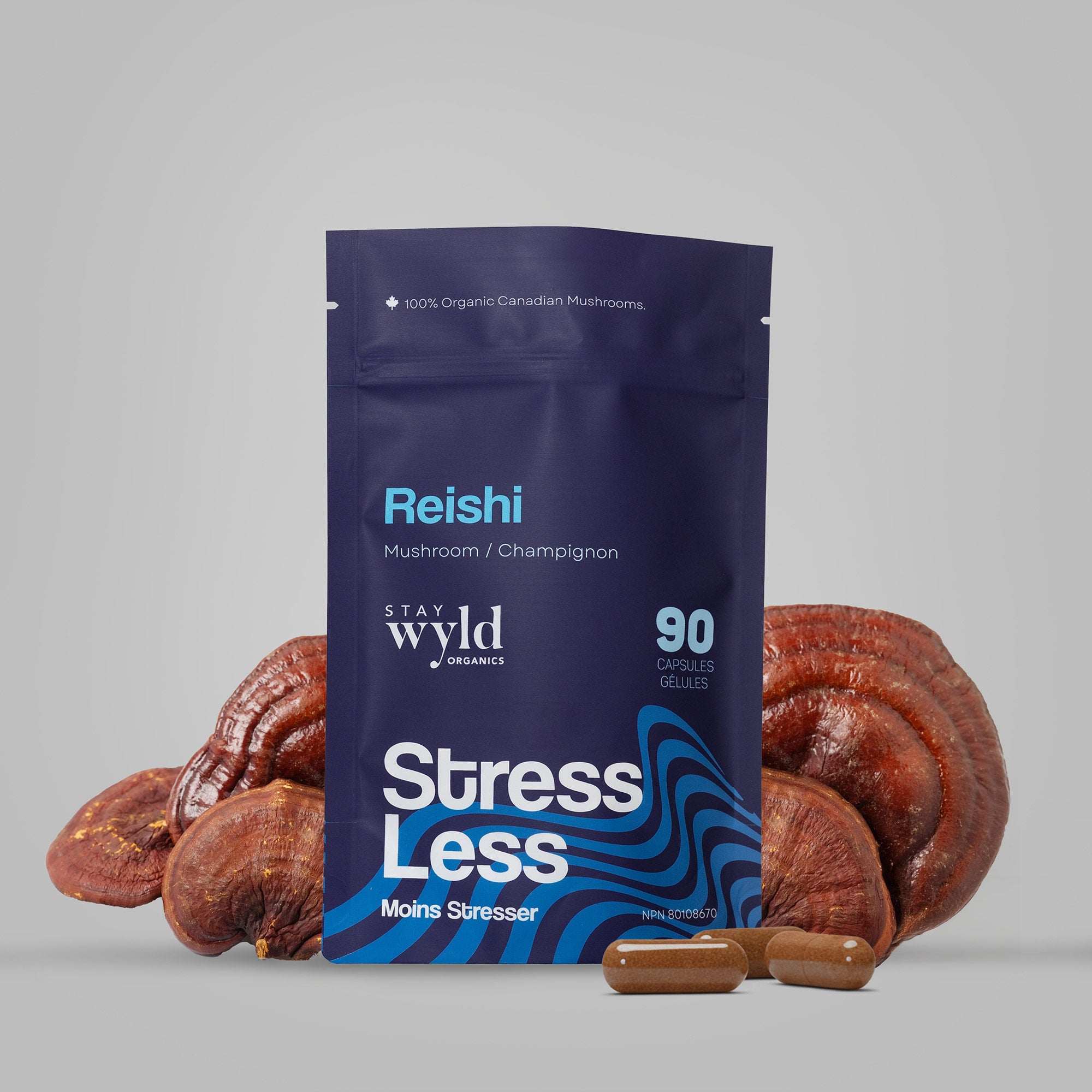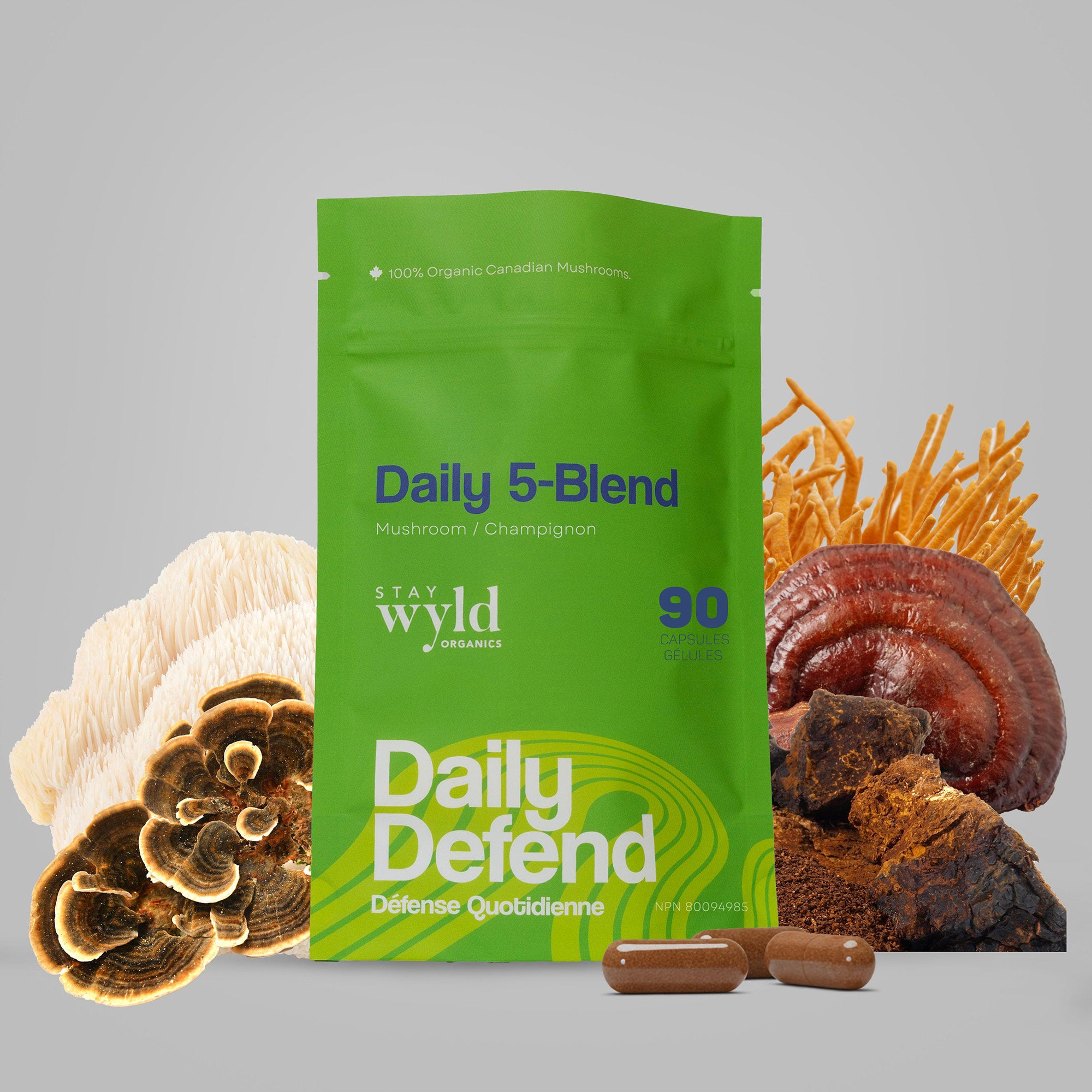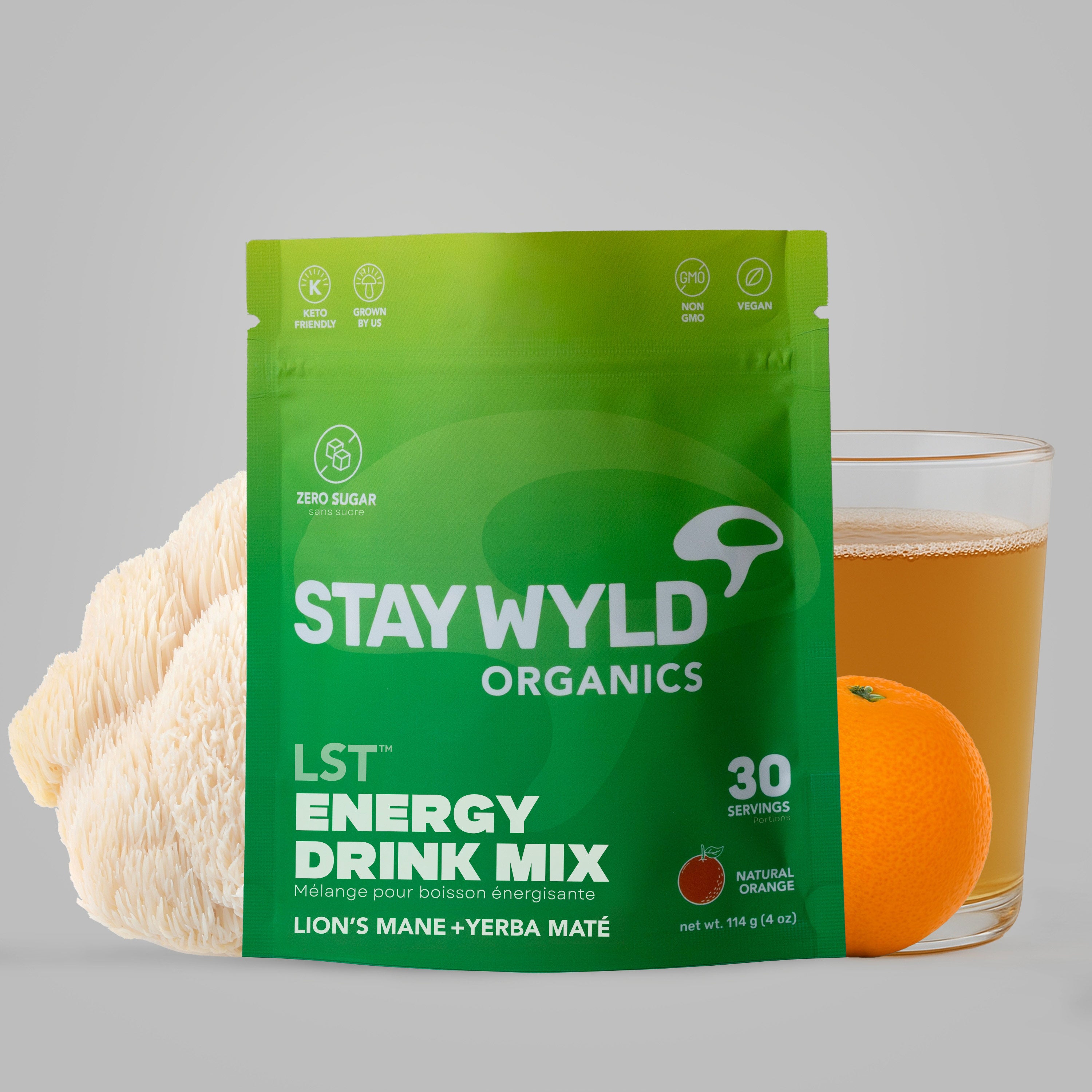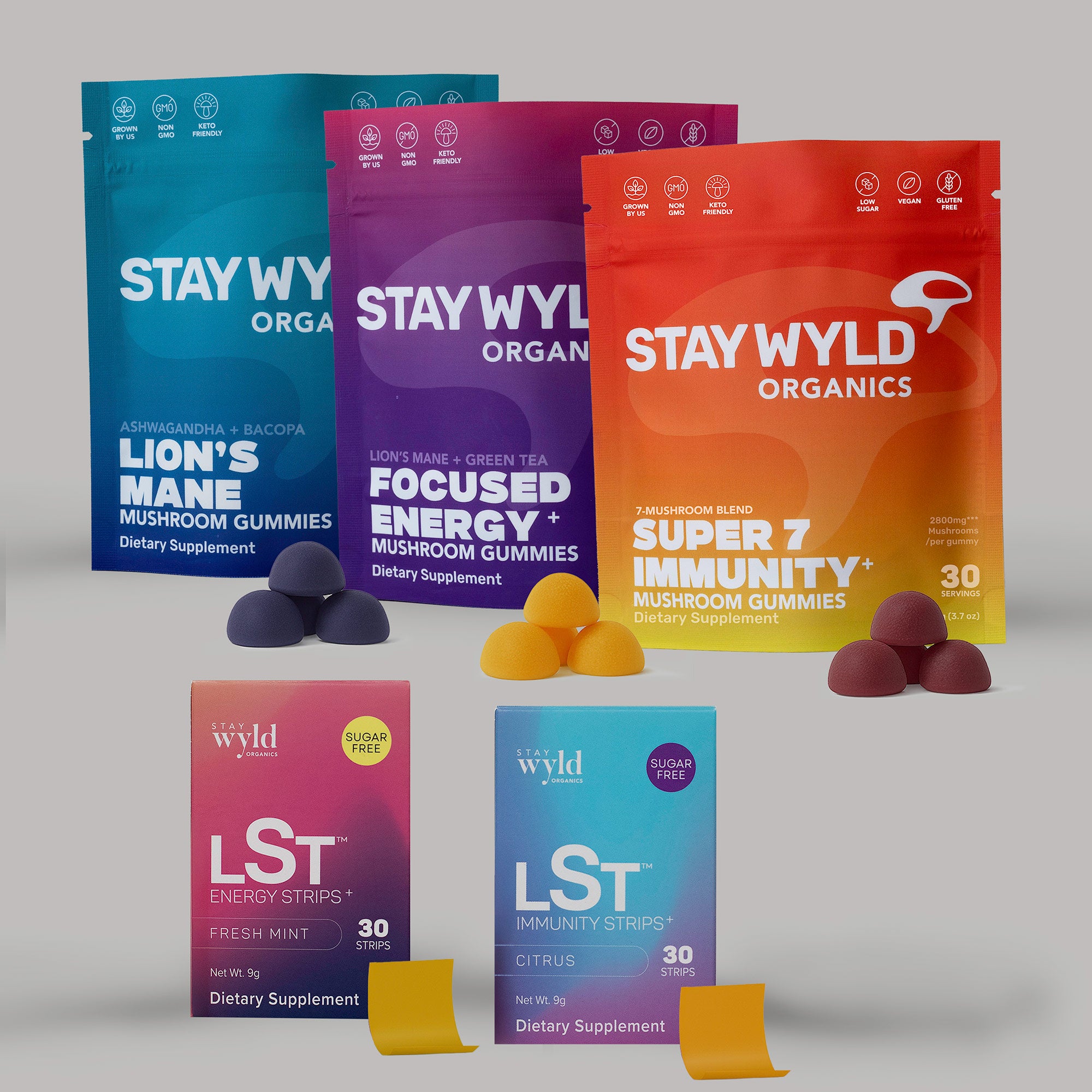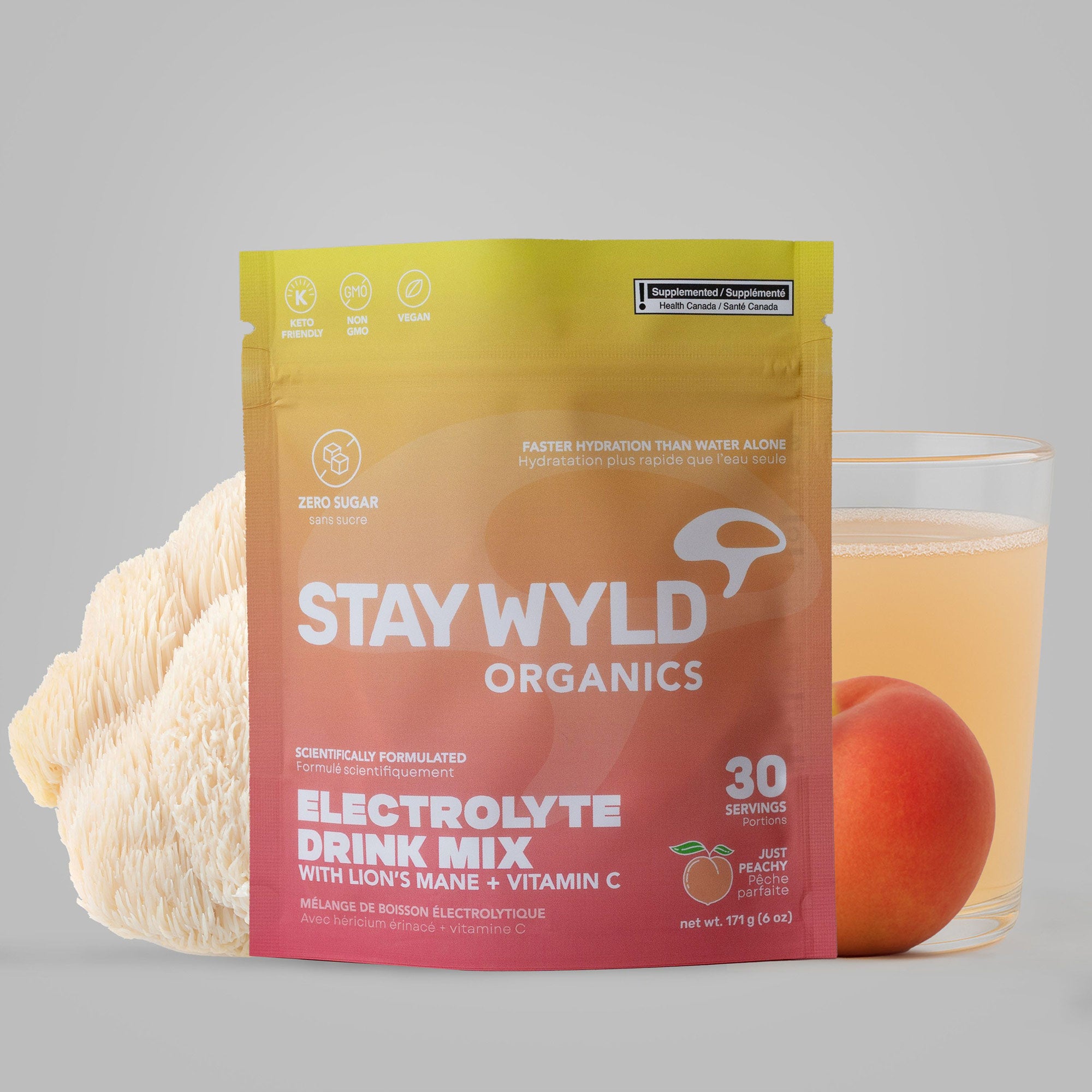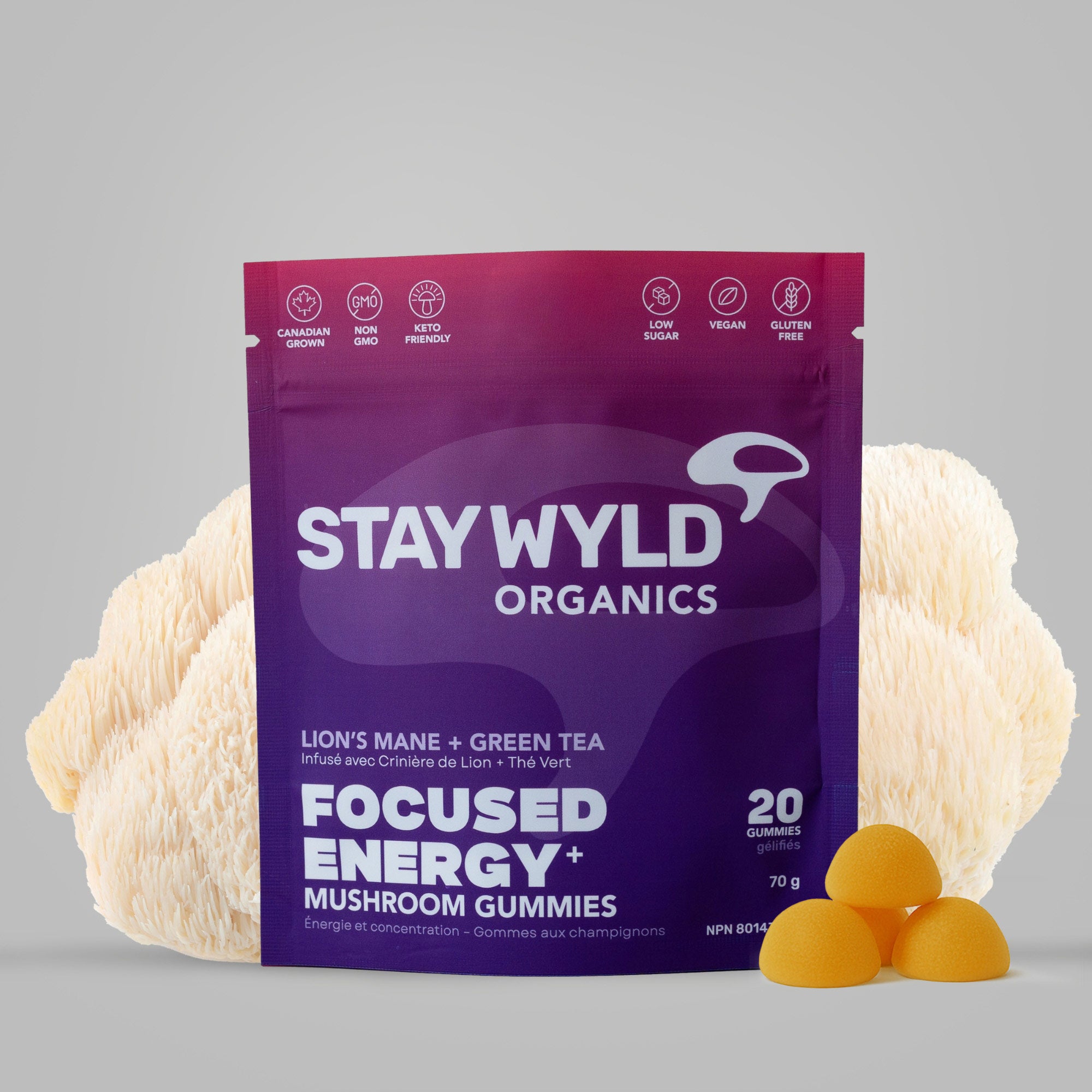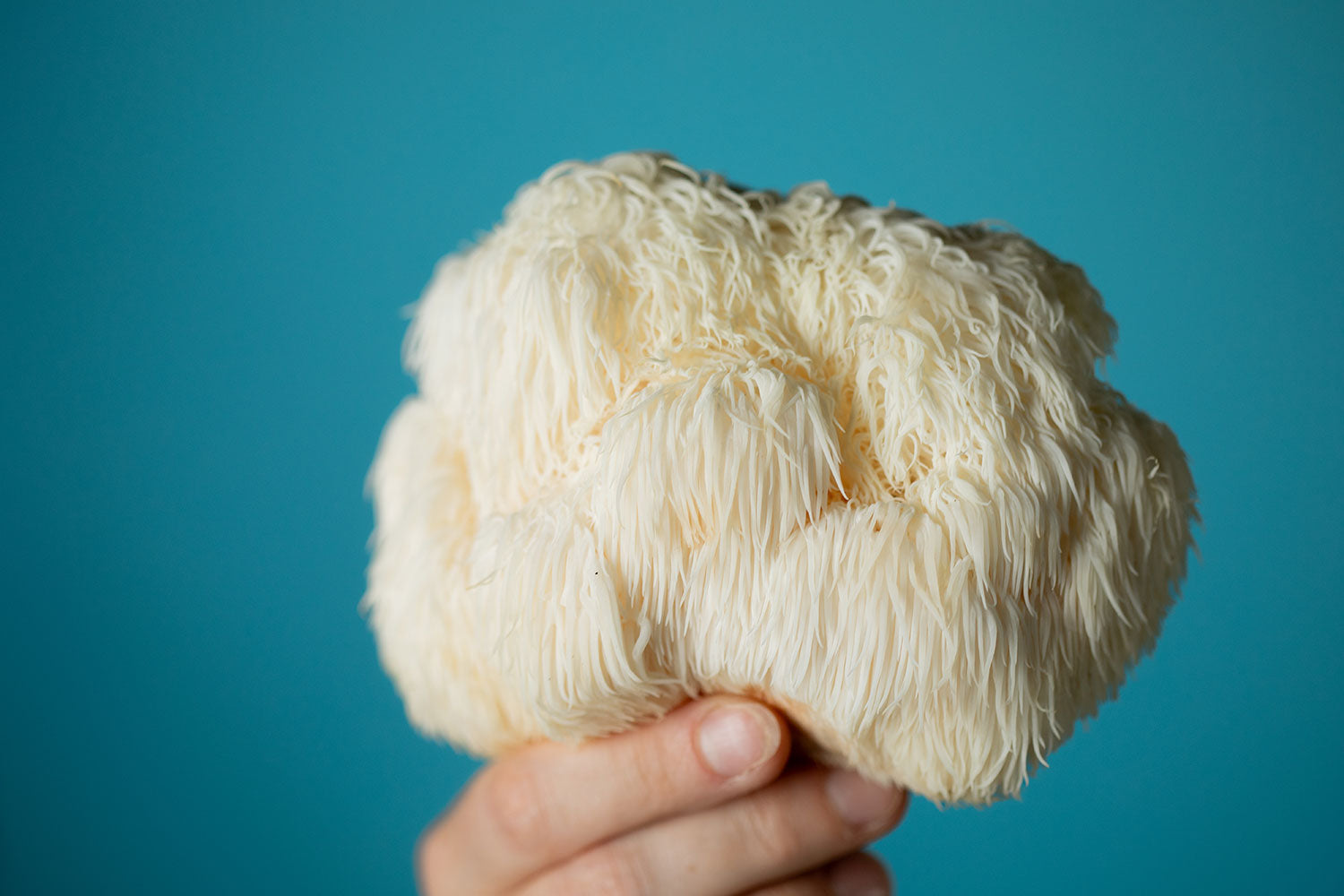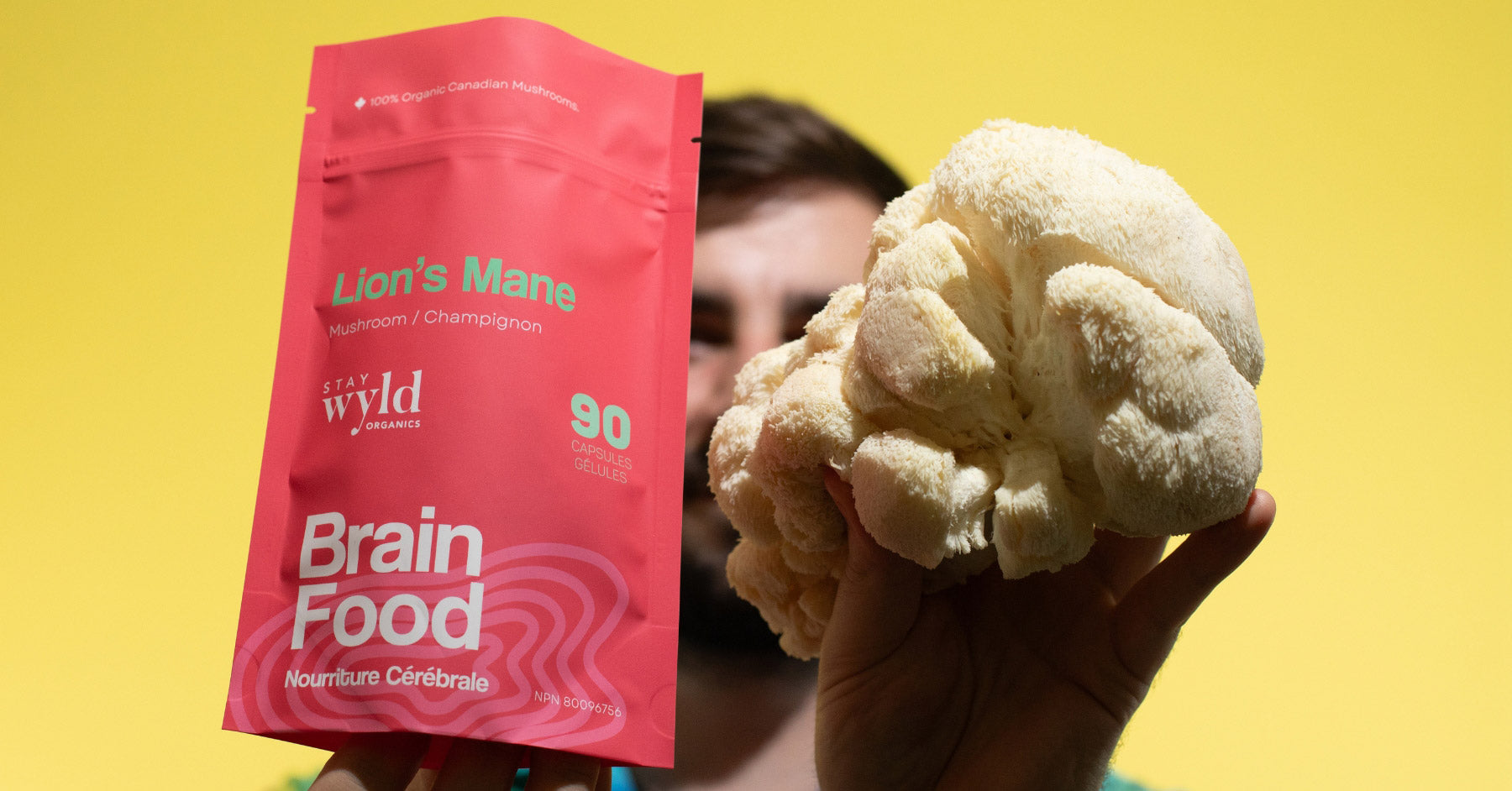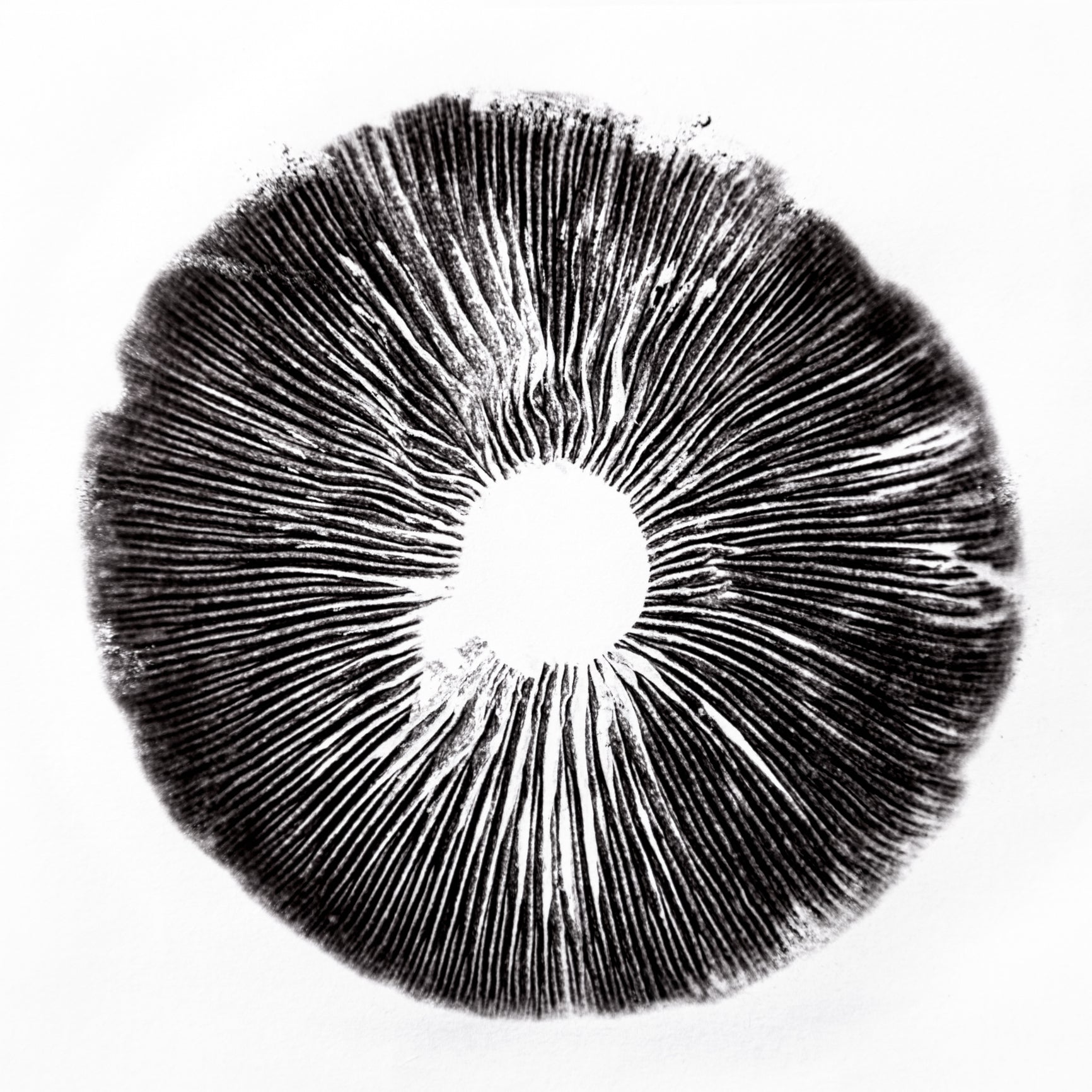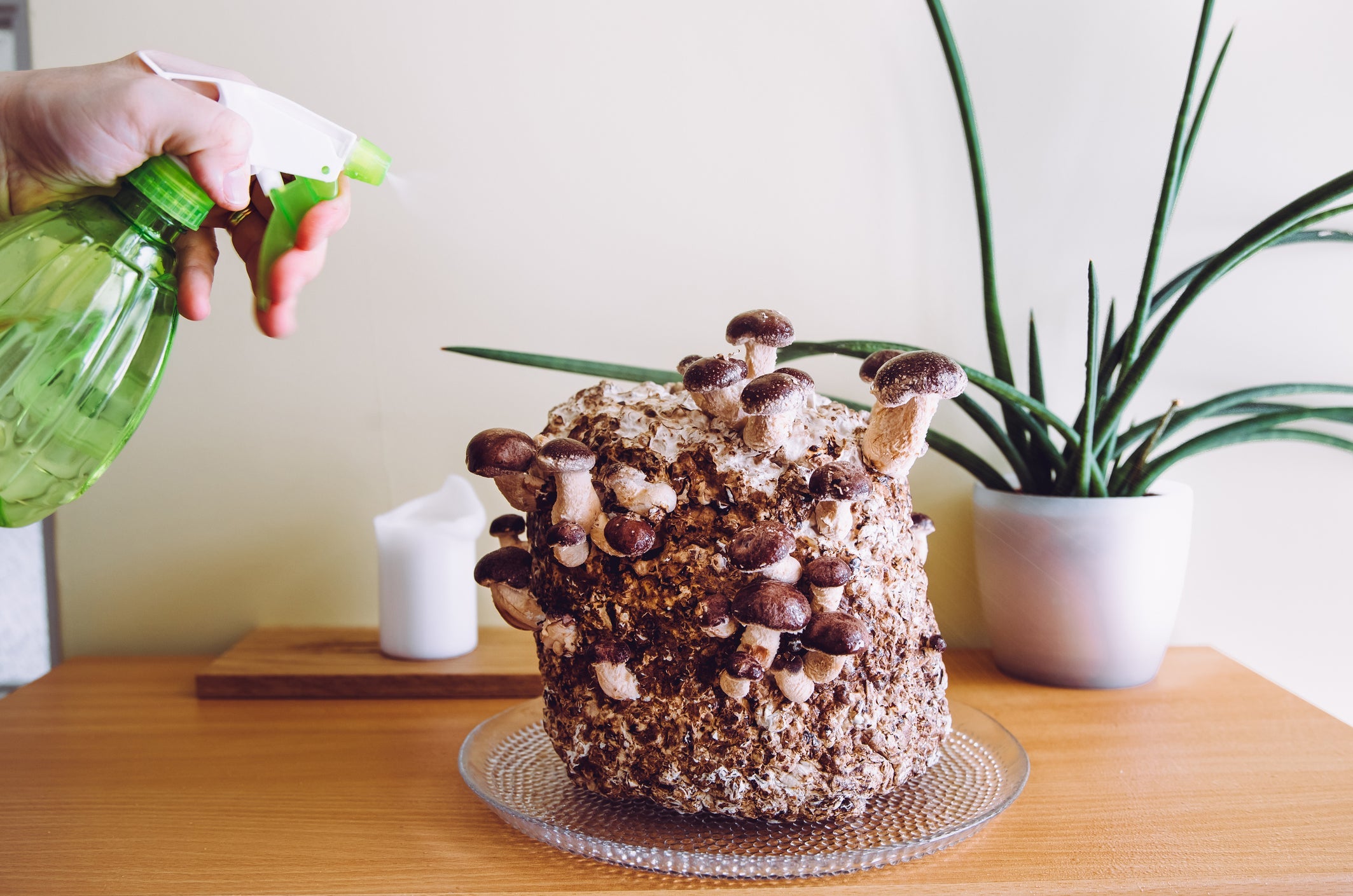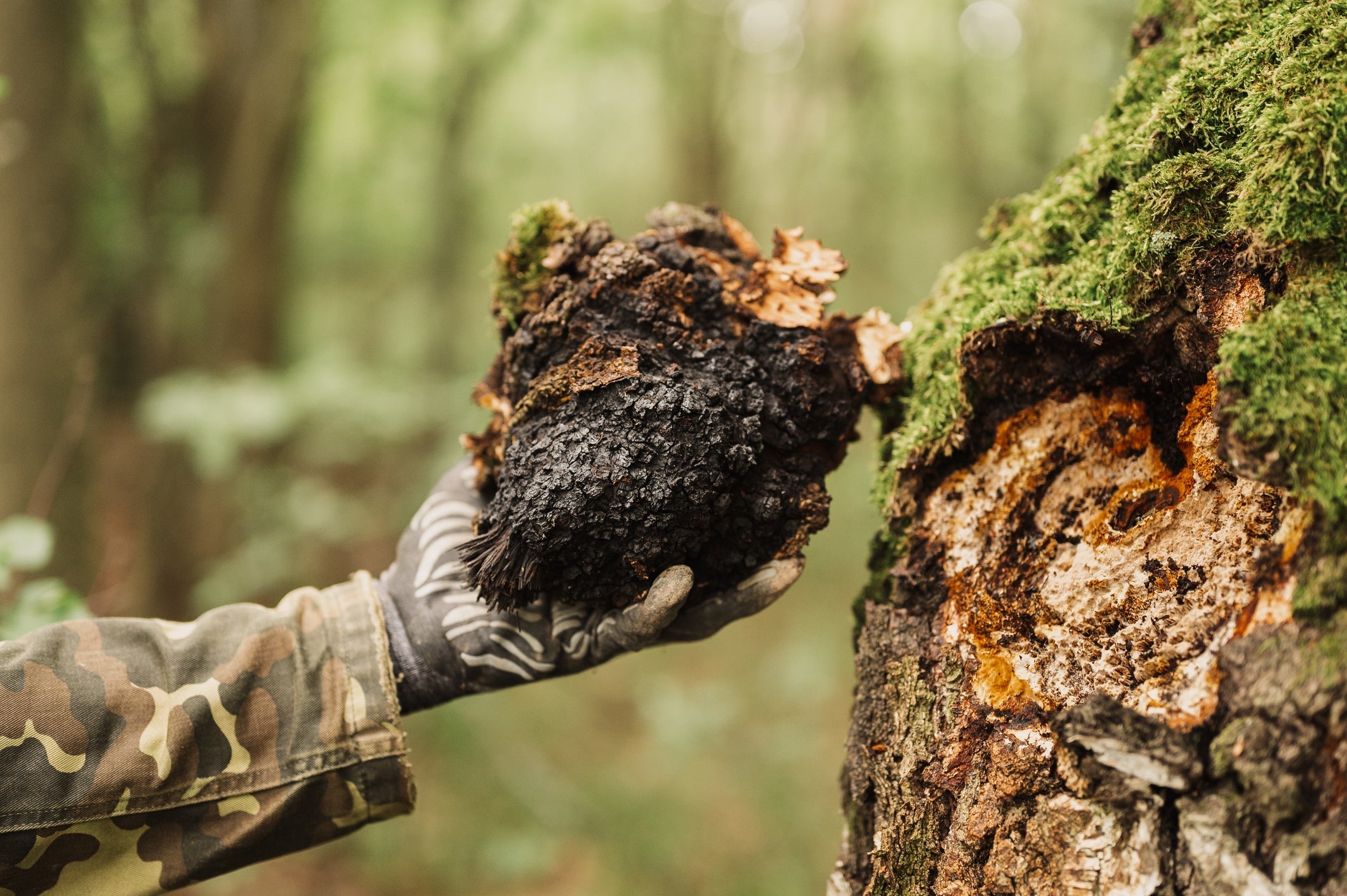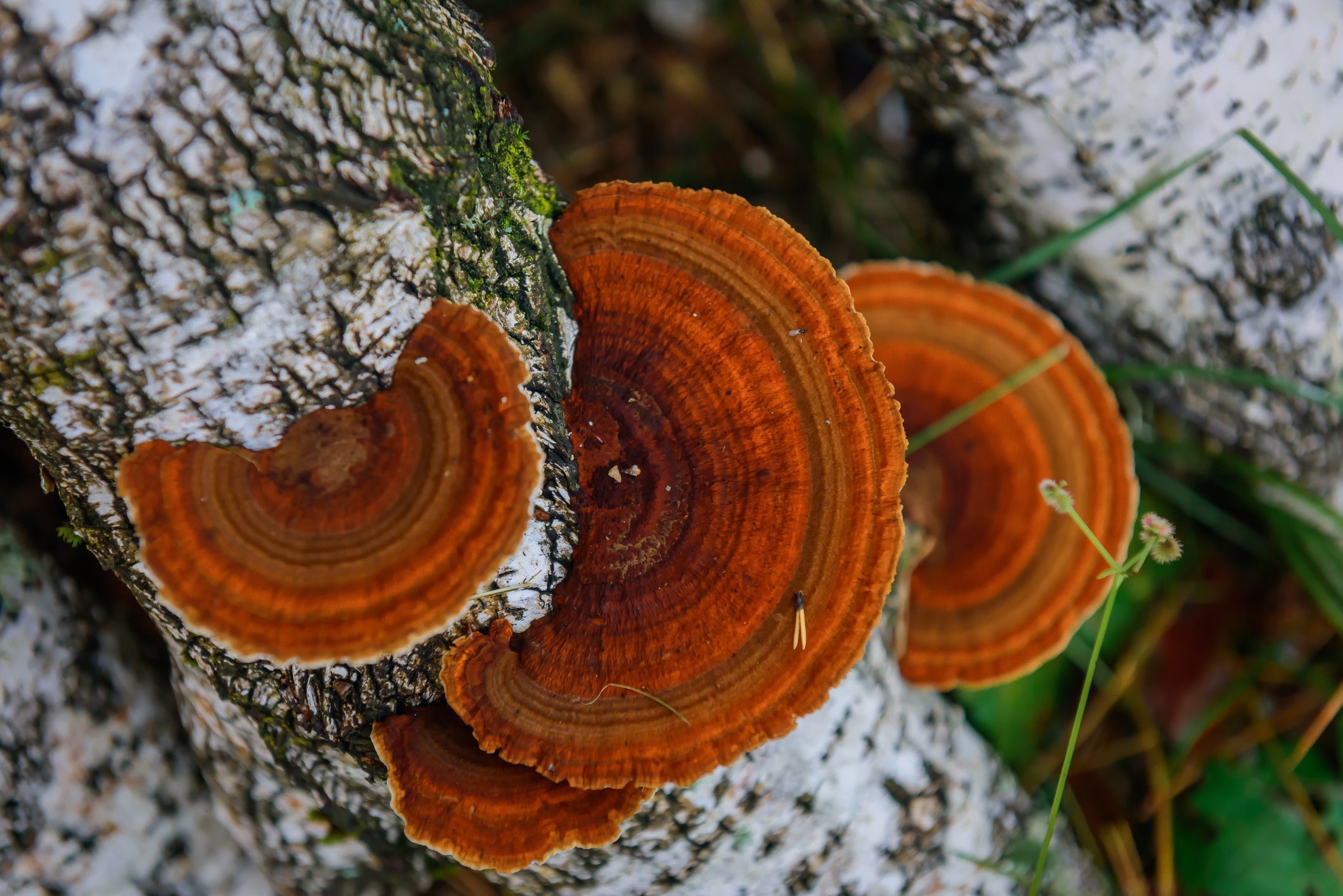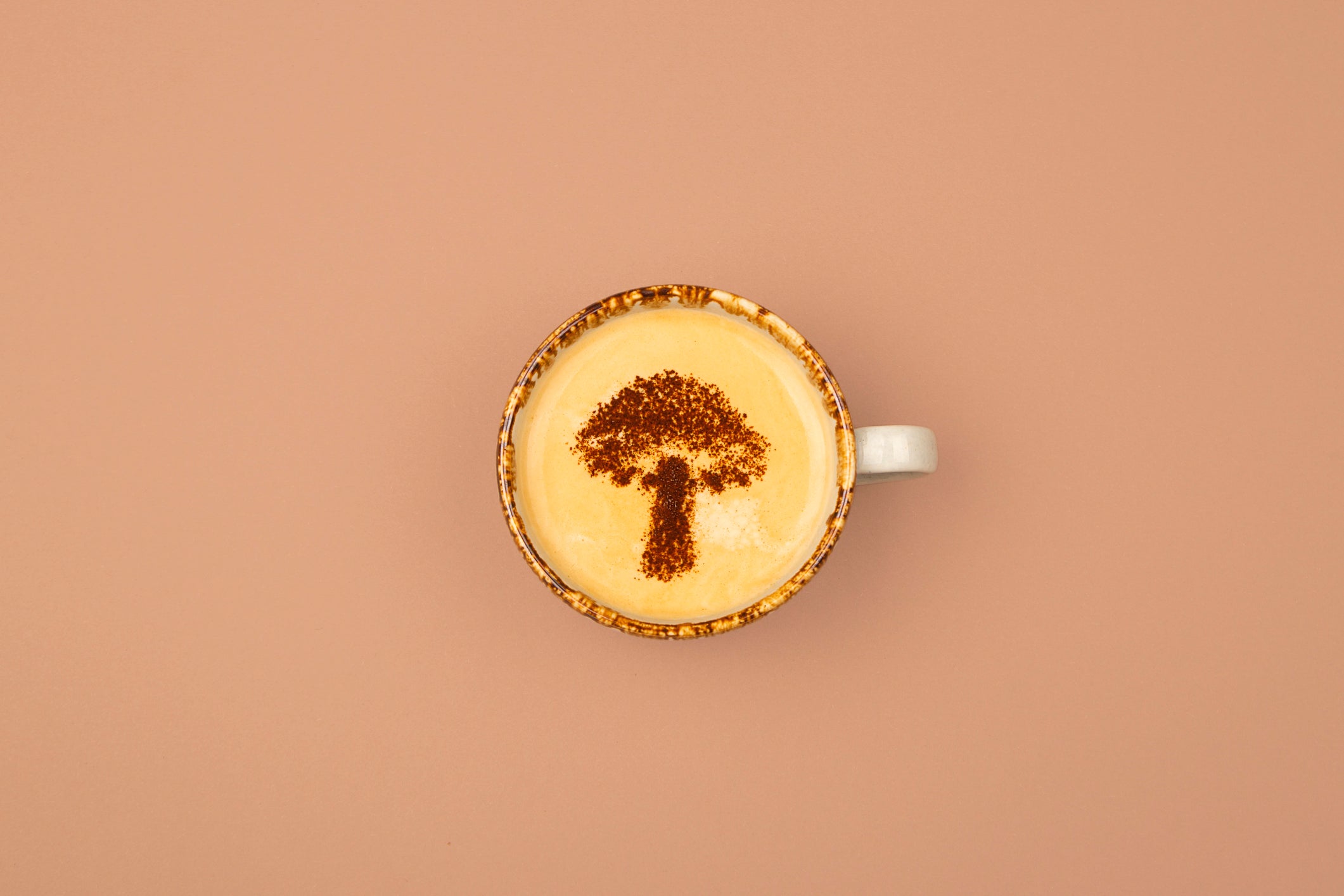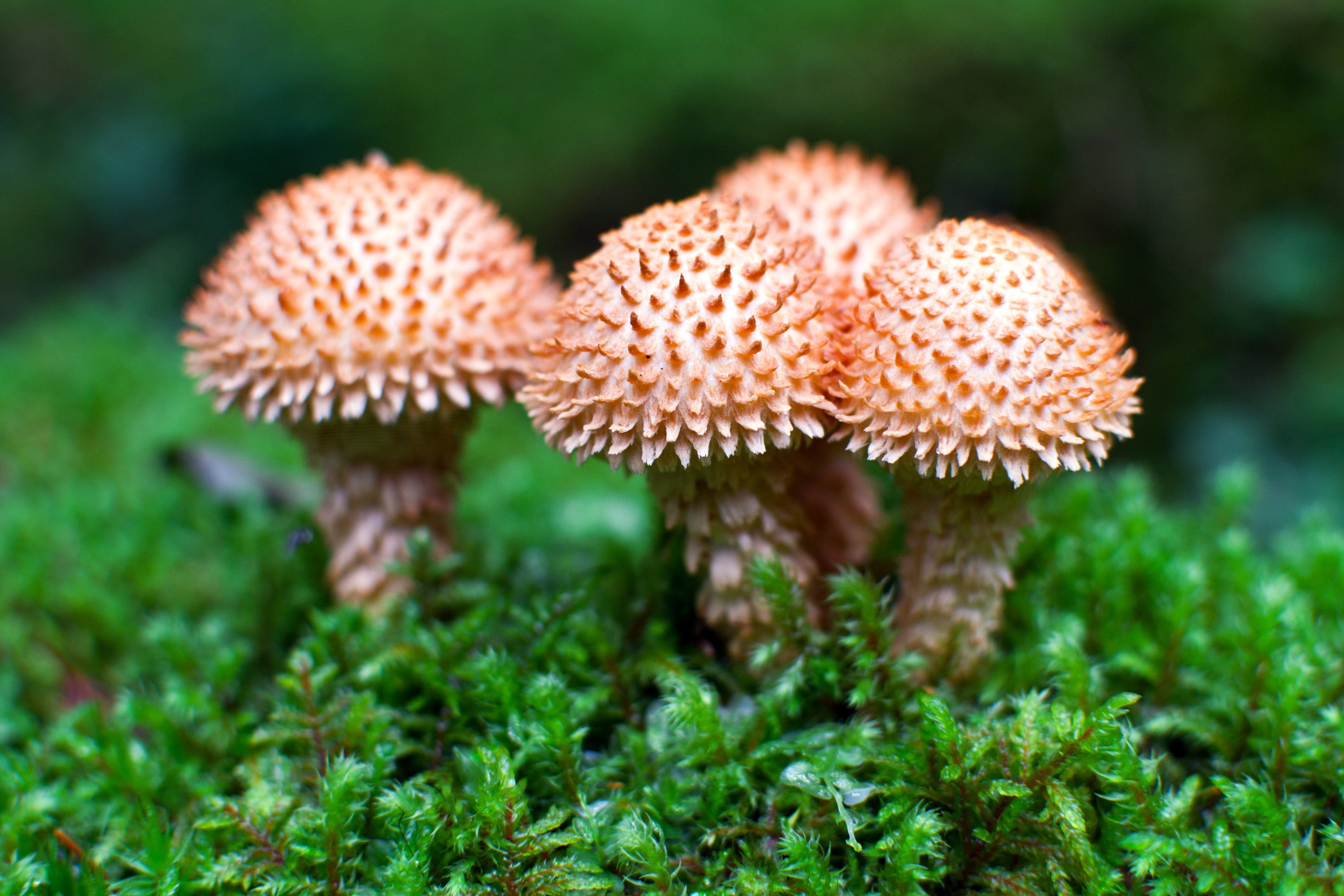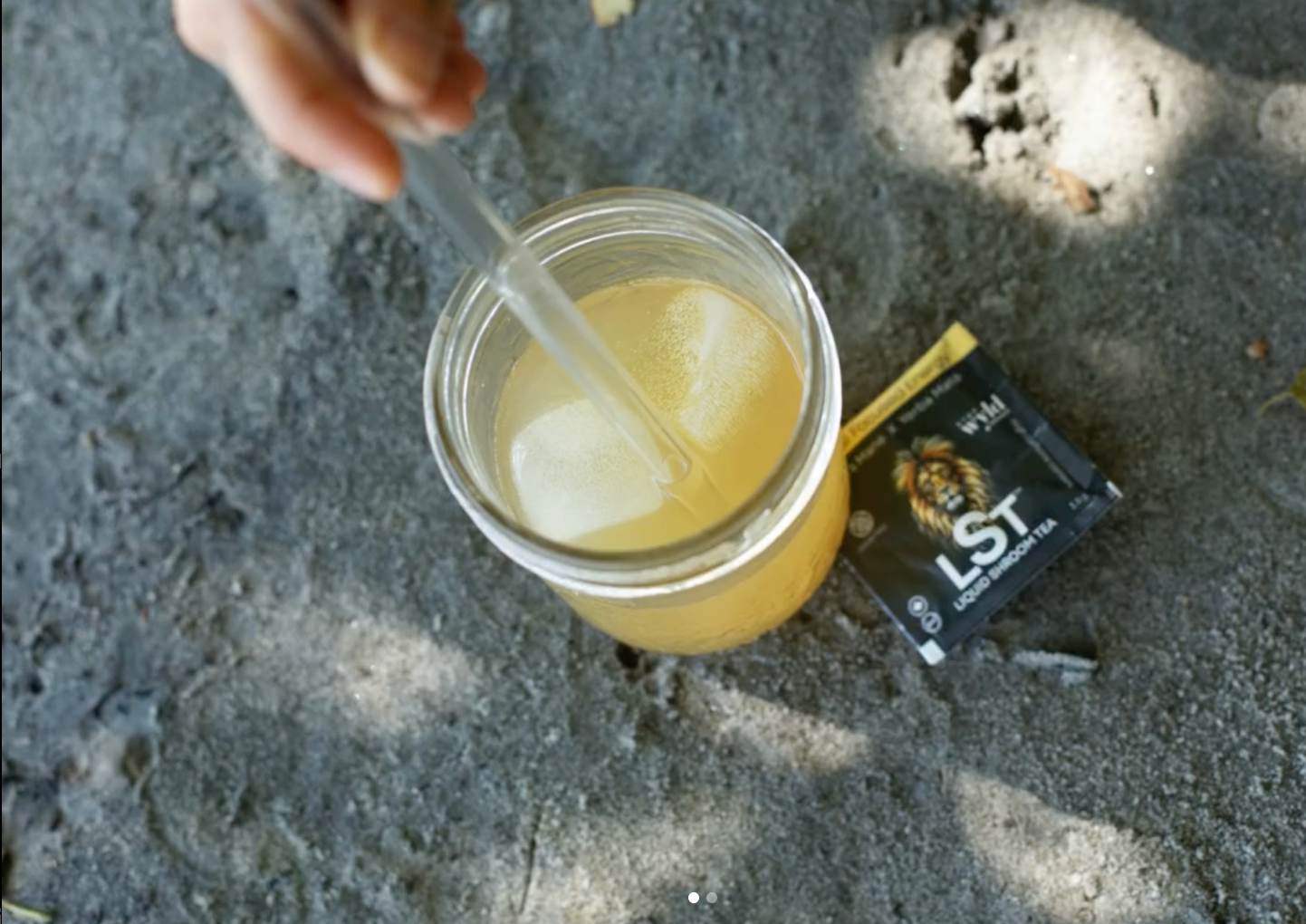The Magic of Mushroom Grow Kits: Your Guide to Homegrown Fungi
13 minute read
Stepping into the realm of growing your own mushrooms might appear daunting at first glance. With questions about how to begin, what conditions are necessary, and whether you need particular skills or tools, it's understandable to feel overwhelmed. But fear not, as Stay Wyld Organics is here to simplify this journey for you with what you need to know about mushroom growing kits!
Mushroom Growing Kits have been meticulously crafted, keeping novice growers in mind. They eliminate the need for specialized skills or additional equipment, providing a convenient pathway into the intriguing world of mushroom cultivation. Besides the kit, you'll likely have everything you need to start this hobby right at home.
At Stay Wyld Organics, we've embraced the mushroom-growing adventure using our very own kits and experienced firsthand their effectiveness. Our apprehensions transformed into a rewarding experience as we successfully grew mushrooms right from the get-go.
However, we want you to make an informed decision, and we believe it's crucial to note that the quality of mushroom kits can vary significantly. Therefore, we suggest investing time in research before diving into the process. The market hosts a vast variety of kits, each designed to cater to different mushroom species. This diversity offers you the liberty to choose according to your preferences.
In this article, we're set to delve deeper into the world of mushroom growing kits, discussing their benefits, worth, and the best options available. Whether you're a budding mushroom farmer or exploring a new hobby, these kits are a worthwhile starting point. Having savored the process of mushroom cultivation from our kits at Stay Wyld Organics, we are excited to share our insights and experiences, hoping to guide and inspire you on your mushroom-growing journey. So stay tuned as we embark on this fascinating exploration together.
What is a mushroom grow kit?
A mushroom growing kit serves as an already prepared "fruiting block," pre-colonized with mushroom mycelium and awaiting the right conditions to fruit mushrooms. Typically, the mycelium-infused block, made of substrate materials such as hardwood sawdust, bran, and other mushroom-friendly substances, is housed in a mushroom grow bag. This bag can remain dormant for an extended period, particularly when kept cool in a refrigerator.
These kits are available for a variety of mushroom types, such as shiitake, enoki, lion's mane, and more. However, certain mushroom species thrive better in kit environments than others. One prevalent variety you'll likely encounter in a grow kit is the oyster mushroom, scientifically known as Pleurotus ostreatus.
Why oyster mushrooms? Their resilience to contamination, their tenacious nature, and their ability to fruit consistently across various substrates make them an excellent choice. Moreover, they can successfully fruit even in less-than-ideal conditions, further enhancing their suitability for a kit setup. Their fast growth rate also augments their likelihood of success, and although these kits only require a few simple steps and minimal maintenance, the potential yield size and success rate escalate considerably if the mushroom block is prepared and placed in optimal conditions.
Stay Wyld Organics' mushroom growing kits simplify the entire process, saving you from the labor-intensive preparation stages. You won't need to worry about selecting the appropriate substrate for your mushrooms or prepping a dedicated area for their cultivation. All that's required of you is to open the kit and place it in a suitable environment that ensures sufficient fresh air, light, and humidity.
In essence, a mushroom growing kit is an effortless gateway into the world of mushroom cultivation, designed for convenience and success, even for beginners. The most challenging part of growing mushrooms, the preparation, is already done for you, leaving you to enjoy the fascinating process of mushroom growth.
What are the Mushroom Growing Stages? (WITHOUT A Mushroom Growing Kit)
Step 1: Starts with the Spores
Mushroom cultivation begins with spores, which are analogous to seeds in plant growth. These spores can be collected from mature mushrooms or purchased from a reputable supplier. They are typically sown onto a growth medium or substrate—often a mix of organic materials—that the mushrooms will eventually draw nutrients from.
Side Note: All Stay Wyld mushrooms are grown locally in North America at our facility. We do not purchase any mushrooms from overseas.
Step 2: Keep the Soil Moist
Once the spores are set, maintaining the soil moisture is critical for successful mushroom growth. This involves regular misting, being careful not to oversaturate the substrate. The goal is to create a humid environment that facilitates the growth of the mycelium—the vegetative part of the fungus—from the spores.
Step 3: Incubation Time
The incubation stage follows the sowing of spores. During this period, the mycelium begins to grow and colonize the substrate. This process typically occurs in the dark, with optimal temperatures varying depending on the mushroom species. The incubation stage is complete once the substrate is fully colonized by the mycelium.
Step 4: Time to Lower the Temperature
After full colonization, it's time to trigger the fruiting stage, which often involves lowering the temperature. This temperature change mimics natural conditions, signaling to the mycelium that it's time to produce mushrooms. Additionally, increasing ventilation at this stage is crucial as it replicates the fresh air conditions found in nature.
Step 5: Harvest Time
The final stage is harvest time. This is when the mushrooms are mature and ready to be plucked. Depending on the species, mushrooms can be harvested when their caps are fully open or just as they begin to open. Always handle mushrooms gently to avoid damage and remember to leave the mycelium undisturbed for future fruiting cycles. With the right care and conditions, a single substrate can produce multiple flushes of mushrooms.
What are the types of mushroom grow kits available in the market?
A diverse range of mushroom growing kits is available in the market, each tailored to cultivate a specific type of mushroom. Here are some of the most popular ones:
Reishi: Reishi mushroom grow kits are widely available due to the popularity of this mushroom in traditional medicine. Known for their distinctive red-varnished, kidney-shaped cap, reishi mushrooms are considered a symbol of longevity in many cultures. As for taste, reishi mushrooms have a slightly bitter flavor and are often used in teas and soups rather than eaten directly.
Shiitake: Shiitake mushroom kits are another prevalent choice due to their versatility in cooking and health benefits. Shiitake mushrooms are native to East Asia and recognized for their rich, savory, and umami flavor. They have a meaty texture, making them a popular ingredient in stir-fries, soups, and numerous other dishes.
Oyster: Oyster mushroom kits are excellent for beginners because these mushrooms grow quickly and are very forgiving to cultivate. Oyster mushrooms get their name from their oyster-shaped caps and somewhat seafood-like flavor. They have a delicate, mild taste with a slight hint of sweetness.
Lion's Mane: Lion's Mane mushroom kits cater to those looking to cultivate this unique mushroom known for its potential brain-boosting benefits. Lion's Mane mushrooms have a distinctive appearance, resembling a shaggy white mane, and a flavor that's often compared to seafood, specifically lobster or crab, when cooked.
Morel: Morel mushroom kits cater to those seeking to grow this prized gourmet mushroom at home. Morels are celebrated for their honeycomb appearance and rich, earthy, and nutty flavor. These mushrooms are highly sought after by chefs worldwide.
Portabella: Portabella mushroom kits allow growers to cultivate these large, hearty mushrooms known for their meaty texture and deep, savory flavor. Portabella mushrooms are essentially mature cremini mushrooms, and they make a delicious and satisfying addition to grills, stews, and vegetarian dishes.
Remember, each mushroom species requires specific growth conditions, so always follow the instructions provided with the kit to ensure a successful yield.
Growing Medicinal Mushrooms
Growing Oyster Mushrooms
Oyster mushrooms, with their rapid growth and forgiving nature, are excellent candidates for home cultivation, especially for those using a grow kit. Here's a general outline of the process:
Steps for Growing Oyster Mushrooms
- Start the Kit: Begin by opening your oyster mushroom grow kit. The kit will include a bag containing a block of substrate that's been pre-inoculated with oyster mushroom spores.
- Prepare the Environment: Next, find a suitable location for your kit. Oyster mushrooms prefer a cool, humid environment with indirect light.
- Initiate Growth: Following the kit instructions, usually, you'll need to cut a small opening in the bag containing the substrate block. This allows the developing mushrooms access to fresh air, which they need to grow.
- Maintain Conditions: Maintain a high level of humidity around your kit. This is often achieved by misting the kit with water several times a day. The aim is to keep the environment around the mushrooms moist but not saturated.
- Harvest: Once the mushrooms have matured—typically when the edges of the caps begin to flatten or slightly turn upwards—they're ready for harvest. This usually involves gently twisting and pulling the mushrooms away from the substrate.
What are the necessary conditions for growing Oyster mushrooms using a grow kit?
The primary conditions for growing oyster mushrooms using a grow kit include the following:
- Temperature: Oyster mushrooms prefer a cool to room temperature environment, around 55-75°F (12-24°C).
- Light: While they don't need direct sunlight, oyster mushrooms do require some light to grow properly. Indirect sunlight or fluorescent lighting works well.
- Humidity: High humidity is crucial for growing oyster mushrooms. Regular misting will help maintain humidity levels.
- Airflow: Fresh air is essential for oyster mushroom growth. Ensure your kit is in a well-ventilated area.
How long does it take for Oyster mushrooms to grow using a grow kit?
Oyster mushrooms are one of the faster-growing varieties. Once you've initiated growth, you can expect to see small mushrooms, or "pins," within a week or so. From this point, the mushrooms will mature rapidly, usually being ready to harvest in another 5-7 days. However, remember that this timeline can vary based on environmental conditions. Always monitor your mushrooms closely and adjust care as necessary.
Growing Lion’s Mane Mushrooms
Lion's Mane mushrooms, known for their distinctive appearance and nutritional properties, can also be cultivated at home using a grow kit. Here is a simplified guide to the process:
Steps for Growing Lion's Mane Mushrooms
- Start the Kit: Begin by opening your Lion's Mane mushroom grow kit. Inside the kit, you'll find a bag containing a substrate block already inoculated with Lion's Mane mushroom spores.
- Prepare the Environment: Next, find a suitable location for your kit. Lion's Mane mushrooms prefer a cool, humid environment with indirect light.
- Initiate Growth: Follow the instructions provided with your kit. Usually, you'll need to cut a small opening in the bag that houses the substrate block. This cut allows the growing mushrooms to access fresh air, which is crucial for their growth.
- Maintain Conditions: Keep a high level of humidity around your kit. This often involves misting the kit with water several times a day to ensure the environment around the mushrooms remains moist but not drenched.
- Harvest: Once the mushrooms have matured—typically identifiable by the fully developed, shaggy appearance of the 'mane'—they're ready to be harvested. This usually involves gently twisting and pulling the mushrooms away from the substrate.
What are the necessary conditions for growing Lion's Mane mushrooms using a grow kit?
The key conditions for growing Lion's Mane mushrooms using a grow kit include:
- Temperature: Lion's Mane mushrooms thrive in a cool to room temperature environment, typically around 60-75°F (15-24°C).
- Light: Lion's Mane mushrooms require light to grow properly but avoid direct sunlight. Indirect sunlight or fluorescent lighting is suitable.
- Humidity: Like many mushroom varieties, Lion's Mane mushrooms require a high humidity environment. Regular misting will help maintain this.
- Airflow: Fresh air exchange is essential for Lion's Mane mushroom growth, so ensure your kit is in a well-ventilated area.
How long does it take for Lion's Mane mushrooms to grow using a grow kit?
Lion's Mane mushrooms take a bit longer to grow compared to some other varieties. After initiating growth, it may take up to two weeks to start seeing small mushrooms, also referred to as "pins." From there, the mushrooms will develop over another 1-2 weeks before they are ready to harvest. However, the exact timeline can vary based on environmental conditions, so it's important to keep a close eye on your mushrooms and adjust care as necessary.
Growing Reishi Mushrooms
Renowned for their medicinal properties, Reishi mushrooms can be a rewarding variety to cultivate at home, especially with the help of a grow kit. Here's an overview of the process:
Steps for Growing Reishi Mushrooms
- Start the Kit: Open your Reishi mushroom grow kit, which should include a bag containing a block of substrate already inoculated with Reishi mushroom spores.
- Prepare the Environment: Find a suitable location for your kit. Reishi mushrooms prefer warmer temperatures and high humidity, and unlike many other varieties, they can tolerate lower light levels.
- Initiate Growth: Follow the instructions that came with your kit. Usually, this involves making an incision in the bag that encases the substrate block to allow the developing mushrooms to access fresh air.
- Maintain Conditions: Regularly mist your kit to maintain the high humidity levels that Reishi mushrooms require. Aim to keep the environment moist but avoid oversaturation.
- Harvest: Once the mushrooms have developed their distinctive cap and have a glossy, varnished appearance, they are ready to harvest. This often involves carefully removing the mushrooms from the substrate.
What are the necessary conditions for growing Reishi mushrooms using a grow kit?
The primary conditions for growing Reishi mushrooms using a grow kit include:
- Temperature: Reishi mushrooms prefer warmer temperatures, ideally around 70-80°F (21-27°C).
- Light: While Reishi mushrooms can tolerate lower light levels compared to some other varieties, they still need some indirect light to grow effectively.
- Humidity: High humidity is crucial for Reishi mushroom cultivation. Regular misting helps to maintain this.
- Airflow: Fresh air is essential for Reishi mushroom growth, so ensure your kit is in a well-ventilated area.
How long does it take for mushrooms to grow using a Reishi grow kit?
Reishi mushrooms are slower growing compared to some other varieties. Once you've initiated growth, it can take 2-3 weeks before you see the beginnings of mushroom growth, or "pins." From there, the mushrooms will develop over a further 6-8 weeks before they're ready to harvest. However, this timeline can vary based on environmental conditions, so it's important to monitor your mushrooms and adjust care as necessary.
What are the advantages of using a mushroom grow kit compared to growing mushrooms from scratch?
Growing mushrooms at home can be a fascinating hobby. While some enthusiasts enjoy the full process from spore to harvest, many others appreciate the convenience and increased success rate of mushroom grow kits. Here are some of the main advantages of using a mushroom grow kit:
- Simplicity: Grow kits come with pre-inoculated substrate, meaning the initial steps of mushroom cultivation, which can be quite intricate, are already taken care of. All you need to do is follow the simple instructions provided.
- Increased Success Rate: Grow kits are typically designed and packaged in controlled environments, minimizing the risk of contamination. This significantly increases your chances of a successful yield.
- Variety: Grow kits are available for many different types of mushrooms, allowing beginners to experiment with varieties that might be more challenging to grow from scratch.
- Educational Value: For beginners, a grow kit provides a hands-on learning experience about mushroom cultivation. It serves as an introductory step to understanding the life cycle and growth requirements of mushrooms.
- Convenience: All the necessary materials are included in one kit, so there's no need to source and sterilize substrate or purchase spores separately.
- Speed: Because the substrate in a grow kit is already colonized with mycelium, the time from setup to harvest is significantly shorter than if you were to start from scratch.
- No Special Equipment Required: Aside from a spray bottle for maintaining humidity and possibly a source of indirect light, grow kits don't require any additional equipment.
Whether you're new to mushroom cultivation or an experienced grower looking for a simpler method, mushroom grow kits offer a straightforward and effective way to grow your own mushrooms at home.
Where can I purchase a good quality mushroom grow kit, and how much do they cost?
Purchasing a high-quality mushroom grow kit is a straightforward process, and there are a few different places you can look. Here's where to start:
- Online Retailers: Websites such as Amazon and eBay often have a variety of mushroom grow kits available from different suppliers. But before you buy, do research on where they source their mushrooms. Getting quality mushrooms is a must-have for enjoying the fruits of your labor.
- Specialist Gardening Stores: Many gardening stores and plant nurseries sell mushroom grow kits, especially those that specialize in organic or home-grown produce.
- Specialist Mushroom Stores: Several online stores specialize in mushroom products, including grow kits. These stores are usually run by mycology enthusiasts and are a great place to find high-quality kits. Some well-known online stores include North Spore, Fungi Perfecti, and Grow Organic.
- Direct from Stay Wyld Organics: As a company specializing in organic mushroom products, Stay Wyld Organics offers premium quality mushroom grow kits that are perfect for beginners and experienced growers alike.
As for cost, the price of a mushroom grow kit can vary significantly depending on the type of mushroom, the size of the kit, and the retailer. On average, you can expect to pay anywhere from $20 to $50 for a kit. Remember, investing in a high-quality kit can often mean a higher yield and a more successful growing experience, so it can be worth paying a bit more upfront.
When selecting a mushroom grow kit, consider the type of mushroom you want to grow, the kit's reviews and ratings, and any customer feedback, especially regarding yield and ease of use. By doing your research, you can ensure that you choose the best kit for your needs and have the most successful mushroom-growing experience possible.
Concluding so you can Start Your Mushroom Cultivation Adventure
Navigating the world of mushroom cultivation can seem daunting, especially for beginners, but as we've discussed in this article, mushroom grow kits, such as those offered by Stay Wyld Organics, provide a simple and highly successful method to grow your own mushrooms.
Whether you're growing Oyster, Lion's Mane, or Reishi mushrooms, these kits come equipped with everything you need and take you through each stage of the process. Not only do these kits save you time and effort, but they also offer a fun, educational experience. You have the opportunity to cultivate a variety of flavorful and beneficial mushroom species right in your own home, whether for culinary, medicinal, or simply gardening pleasure.
So, whether you're a seasoned mycology enthusiast or someone looking to dip their toes into mushroom farming, consider investing in a mushroom grow kit. It's an adventure in mycology that's just waiting to happen!
Leave a comment
All comments are moderated before being published.
This site is protected by hCaptcha and the hCaptcha Privacy Policy and Terms of Service apply.

